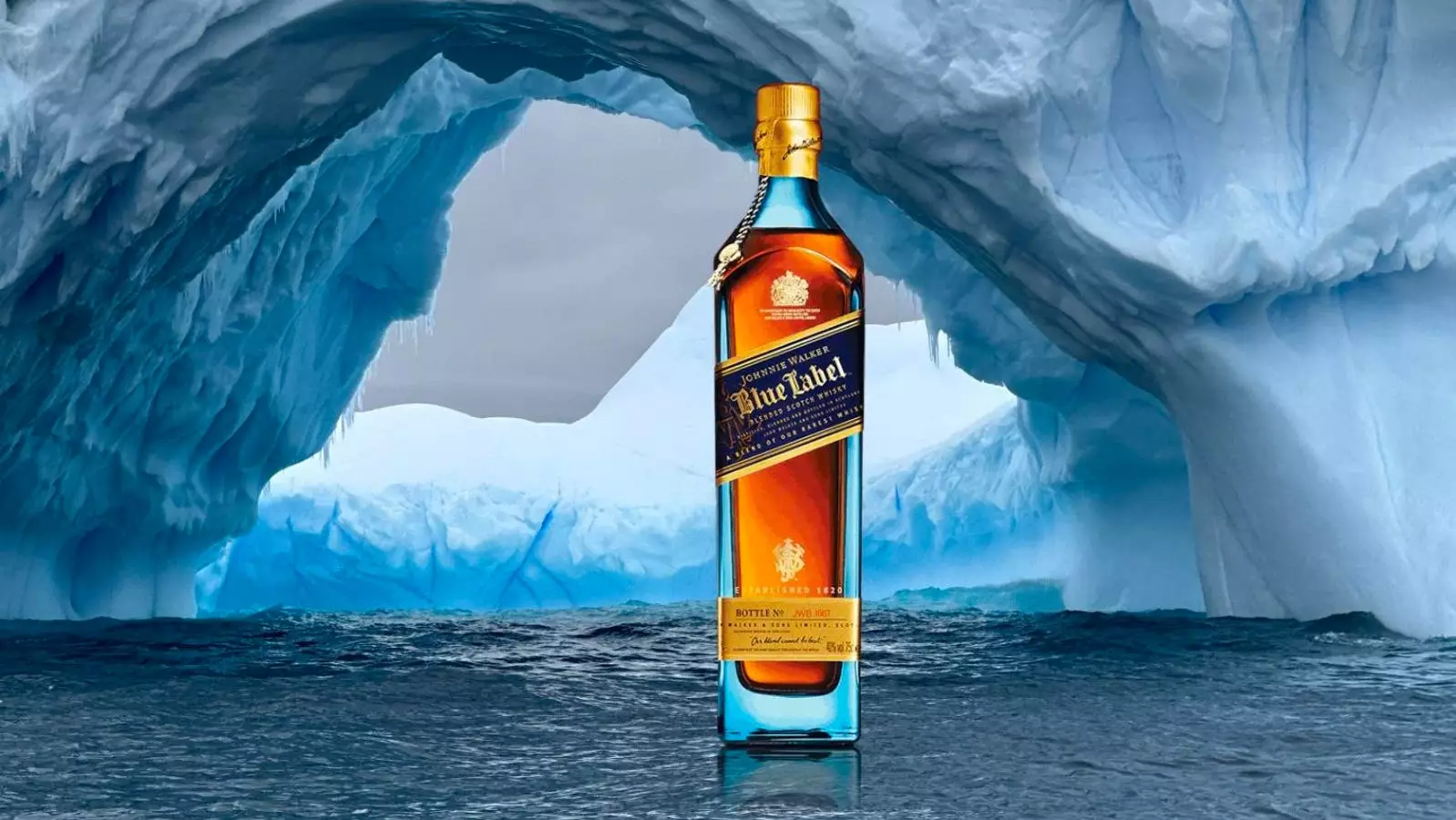Since its launch in 1992, Johnnie Walker Blue Label has carved out its niche as a premier luxury scotch, captivating aficionados and casual drinkers alike. As the inaugural ultra-premium offering from the venerable Johnnie Walker brand, it was released in an era when lavish spending on whiskey, except for the most esteemed cognacs, was largely unheard of. The gamble paid off handsomely, establishing Blue Label not just as a drink, but as a cultural icon synonymous with sophistication.
What sets Blue Label apart is its carefully curated blend; the producers have adopted an almost reverential approach to selection, with only one out of every 10,000 barrels deemed worthy of inclusion. This commitment to quality implies that each sip contains a narrative rooted in complexity and historical reverence—a vital part of its appeal.
Describing the sensory experience that Johnnie Walker Blue Label offers is akin to composing music; each element harmonizes to create a rich tapestry of flavor. The whiskey opens with fragrant notes of honey, cedar, and dried berries, introducing the drinker to its nuanced personality. Its luxurious essence unfurls further with layers of toffee and the nuanced earthiness of campfire smoke, finishing off with a soft echo of honey and wood spice. Critics and connoisseurs alike note its remarkable consistency—what one experiences today echoes the taste of the past, affirming the brand’s dedication to its original vision.
Spirits expert Adam Gertsen alludes to the intricacies present in Blue Label, highlighting its smoothness tempered by faint smoke. He emphasizes the richness in flavor, noting how hints of honey and chocolate linger long after each sip. Similarly, Danilo Frigulti, a prominent figure in London’s bar scene, articulates how the balance and richness, combined with a crunchy fruitiness, gives the drink an almost universal appeal. This complexity enables Blue Label to be enjoyed neat, celebrating its heritage while still inviting exploration.
The allure of Johnnie Walker Blue Label extends beyond its contents; the packaging acts as an ambassador of luxury in its own right. Cloaked in an elegant cobalt blue bottle, it captures attention and signifies a product designed for discerning consumers. The charming pendant swinging from its neck adds an element of exclusivity—a subtle promise that this spirit holds significance beyond just alcohol.
In the burgeoning luxury landscape of the early 2000s, Blue Label became a status symbol, often seen alongside elite brands like Cohiba cigars and Rolex watches. Its refined packaging helps maintain this elite image, making it a coveted possession not just for its flavor, but for what it represents in the realm of affluence.
As the scotch market transformed, particularly with the rise of single malts, Blue Label managed to hold its ground and expand its legacy. Interestingly, it contains a considerably high percentage of malt whisky—scholars estimate upwards of 80%—setting it apart from standard blended offerings, which typically feature less than half malt. This rare blend has not only satisfied traditionalists but has also appealed to new generations of connoisseurs seeking richer flavors.
Moreover, the brand has successfully engaged modern drinking culture by introducing limited-edition bottlings, tapping into the rich lore of its distilleries and the artistry involved in its production. The King George V release in 2007 exemplified this strategy, sharpening its focus on the historical foundations of scotch-making. More recent releases, like Xordinaire and Elusive Umami, crafted in collaboration with highly regarded figures in gastronomy and mixology, reflect an innovative spirit that resonates with contemporary drinkers.
Under the direction of master blender Emma Walker, there has been a noticeable uptick in creative offerings, most notably through the introduction of the Cobalt Series, which has challenged traditional norms. The Blue Label Ice Chalet, for example, marries high fashion with exceptional whiskey, reflecting modern values melded with classic luxury.
As Johnnie Walker Blue Label continues to solidify its reputation, it demonstrates an adeptness for adapting to current trends while remaining decidedly true to its roots. Its presence at cultural events like the Sundance Film Festival positions it not merely as an alcoholic beverage, but as a social symbol where style, craft, and luxury converge.
In a crowded marketplace, Johnnie Walker Blue Label remains a vital force. Described by spirits expert Ben Wald as defining the luxury blended scotch category, it enjoys a status comparable to legendary brands across various industries. Its bottle alone signifies importance, often serving as a conversation starter long before its contents surface.
In essence, Johnnie Walker Blue Label isn’t just about what’s poured in the glass; it’s a narrative steeped in tradition, innovation, and elegance, making it deserving of its celebrated place on both bars and shelves worldwide. As it continues to evolve, it invites drinkers to not merely taste history but to embrace a slice of luxury in their own lives.

